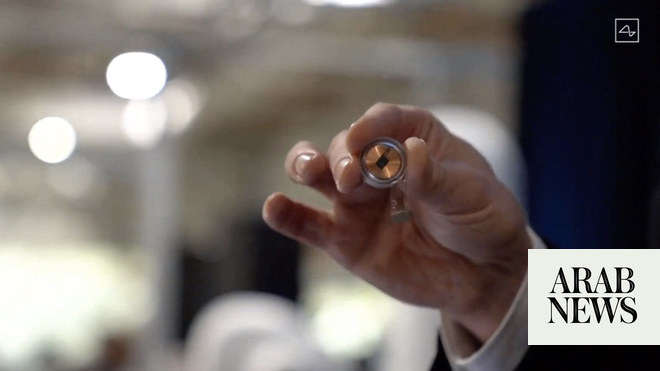
Elon Musk last week made another public presentation that was meant to drop our jaws: A pig (affectionately named Gertrude) with a chip in her brain showing a signal whenever she sniffed for food. The signal and the demonstration were far from impressive, but Musk added various explanations and comments to convince us that “the future is going to be weird,” as he put it.
First, some reassurance had to be given that putting a coin-sized chip in a brain is safe. So, with Gertrude, another two pigs were displayed: One that had a chip implanted in its brain and then removed, and one that had never had any such thing. All three pigs seemed normal, with nothing to tell which had that kind of intervention. Musk joked: “I could have a chip just under my hair and you wouldn’t know it… maybe I do.”
Second, some basic explanation of how that “brain reading” works. The chip just detects electric signals and sends them wirelessly to a computer, where a program interprets the specific neural activity, in this case “sniffing for food.”
The same kind of chip has been tried on mice and monkeys. Most importantly, Neuralink (Musk’s company doing this research) applied for human trial permits last year and preliminary authorization has been given, so testing will start later this year.
So is this a breakthrough? Will this have positive and important applications for us humans? Or is this some misguided research by the transhumanist gang?
Until now, we have had two things. The first is the prosthetics (metallic or plastic arms and legs, mainly) that can connect to nerves in one’s body and be controlled by the brain, nicely replacing any cut-off limb. No chip needed in the brain, and wonderful applications, thank you. The second is the wired head caps that can detect brain waves and have them interpreted by a computer program. These “EEGs” are done in hospitals every day, but they are also used by “futuristic” gamers to play without using any control devices, but rather by sending commands wirelessly from their brain to the computer or video games machine.
Three years ago, Facebook announced a project to develop a headband that would allow people to type 100 words per minute just by thinking. And, last year, it revealed that it was funding extensive university research to that effect, with human volunteers.
Some transhumanists have implanted chips in their hands (to open doors as if with a magnetic card, for example) or, in very rare cases, in their heads, for other purposes. But, mostly, no serious work has been done with chips in human brains. Musk wants to change that. Why? For two reasons.
One, he says, is that we are in a race with artificial intelligence and if machines reach superintelligence before us we may be doomed, as they (the machines) may just decide to get rid of us, as we will be useless and a nuisance (to them). Thus, Musk and the transhumanists say, we have a duty to reach higher and higher levels of intelligence — and one way to do that is to link our brains with powerful computers and smart programs.
If used in limited, specific applications, Elon Musk’s Neuralink chip in the brain can be a positive development. But if allowed to be applied in dangerous fields, it may be just an evil Pandora’s box.
Nidhal Guessoum
Two, they stress, is that there can be important medical applications for chips in our brains: They could help remedy conditions like spinal cord injuries, Parkinson’s disease, Alzheimer’s and dementia, epilepsy, and other serious illnesses. How would that work? By programming the chip to stop the early signals associated with trembling and seizures, averting them before they develop.
However, I must note that this is far from possible now; this is — at best — sometime in the future, if we allow such developments to occur. Indeed, decoding brain signals is notoriously complex and simply reading signals that one can then both quickly associate with trembling and seizures and stop is easier said than done.
Now, what are the concerns? First, there is a fundamental difference between non-invasive brain-device connections (as with prosthetics) and invasive chip-in-the-brain systems: For example, the risk of internal damage or scars are non-negligible; the human body does not like “foreign objects” and will attack them (chemically); and secondary, unintended effects (such as impulses and strange actions) have been observed when wires are introduced in people’s brains even temporarily.
Secondly, and very importantly, there are issues of privacy (of one’s thoughts) and security: Can someone’s brain be hacked and probed for ideas and memories? Musk seems to think that “uploading” one’s memories to a machine, storing them and downloading them back later is a great prospect to look forward to. He does not seem to see the potential abuse of that capability, if — and it’s a big if — and when that becomes possible. It is true this is not inherent in the procedure itself, but rather rests in how it may be used or abused. But still we need to keep that in mind.
To make a long story short, this brain chip is not (yet) a breakthrough; it only will be when it is successfully tested on humans. However, we definitely need to discuss it and set guidelines for it. If used in limited, specific applications, it can be a positive development. But if allowed to be applied in dangerous fields (including the military), it may be just an evil Pandora’s box.
As always, science, research and technology must proceed under the guidance of ethics, which is society’s wise men and women.
Nidhal Guessoum is a professor at the American University of Sharjah, UAE. Twitter: @NidhalGuessoum
Disclaimer: Views expressed by writers in this section are their own and do not necessarily reflect Arab News" point-of-view












